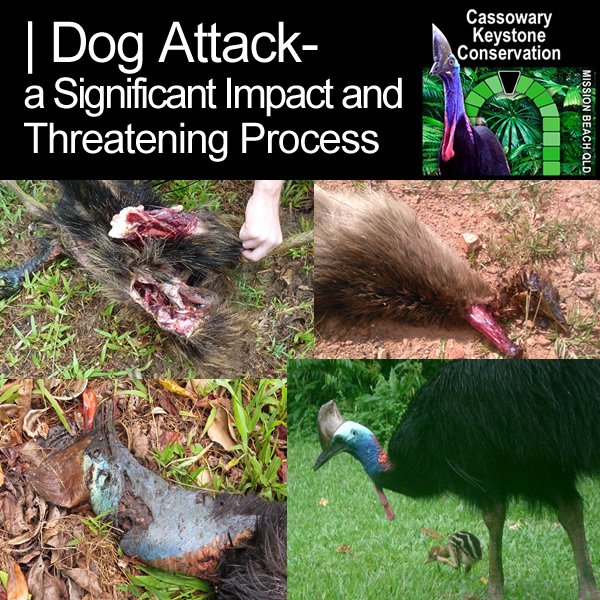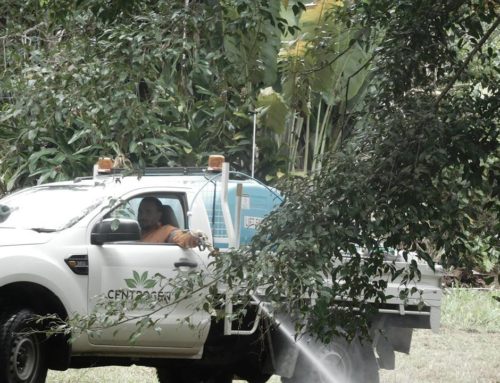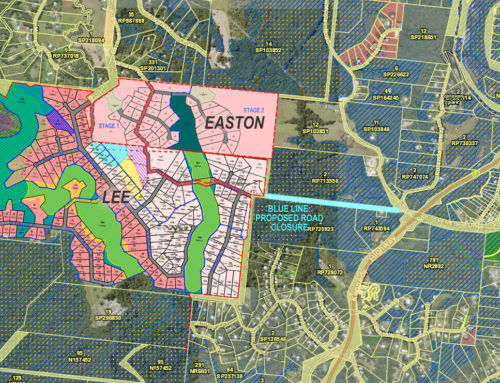Date: 2 February 2017
Submitted by: Ingrid Marker, Cassowary Keystone Conservation
Unrestrained domestic, hunting and wild dogs are an identified threat and major cause of cassowary deaths, particularly in areas near residential development. Chicks and sub-adults are small enough to be killed or separated from their parent by dogs while packs of dogs also kill adult birds, pursuing them until they are exhausted, then attacking them. Dogs also indirectly affect cassowaries through their very presence, influencing the feeding, movements and general behavior of the birds. Domestic dogs can also attack and kill cassowaries when they wander into suburban areas seeking food or water1.
The Federal Government’s Environment Protection Biodiversity Conservation Act 1999 (policy statement 3.15)2 states that there is a real chance or possibility of a significant impact on the southern cassowary from; habitat degradation caused by exotic plants or animals that reduce habitat quality and/or cassowary movement. The threat of death or injury from pig hunting and domestic dogs wandering at large restricts cassowaries ability to safely conduct their natural behavior (i.e. sleep, reproduce, rear young, etc.) in their already much diminished habitat. Domestic dogs are territorial and their scent marking and barking defense is known to restrict the bird’s use of, and movement through, these areas. Cassowaries are also territorial and require large home ranges that may fluctuate seasonally for foraging and breeding behavior. Sub adult cassowaries (which are known to be particularly vulnerable to dog attack) also need freedom of movement to disperse through the landscape to establish their own territories. The presence of dogs increases habitat fragmentation.
The Federal Government’s ‘Cassowary Recovery Plan (2007)’specific objective 3 is to‘Implement strategies to protect cassowary populations by minimising the adverse impacts of roads, dogs, pigs and cyclone events’ with action 3.2 being to
‘Implement appropriate dog control to minimise dog attacks on cassowaries’
Performance criterion 3.2: Responsible dog ownership education program developed and promoted in the community with support from local councils. Shire councils will be encouraged to adopt and enforce dog registration, control regulations and incentives to minimise the incidence of roaming dogs. Regulatory mechanisms and financial inducements will be investigated and appropriate methods will be provided and promoted to all shires throughout cassowary habitat. A responsible dog-ownership education program will also be developed and promoted through community education. Educational material will be developed and public promotional campaigns initiated. Appropriate pig-trapping programs will be encouraged to try to phase out pig hunting using dogs in cassowary habitat. An educational pamphlet will be produced for local shire councils3.
Dog attack is a threatening process for the southern cassowary under the Queensland Nature Conservation Act1992, which defines a threatening process as capable of;
(a) threatening the survival of any protected area, area of major interest, protected wildlife, community of native wildlife or native wildlife habitat; or
(b) affecting the capacity of any protected area, area of major interest, protected wildlife, community of native wildlife or native wildlife habitat to sustain natural processes.
References
2Australian Government Department of the Environment, Water, Heritage and the Arts.(2010). The significant ImpactGuidelines for the Southern Cassowary (Wet Tropics Population). Nationally threatened species and ecological communities
EPBC Act policy statement 3.15.
3 Latch, P. (2007) Recovery plan for the southern cassowary Casuarius casuarius johnsonii. The State of Queensland, Environmental Protection Agency.



